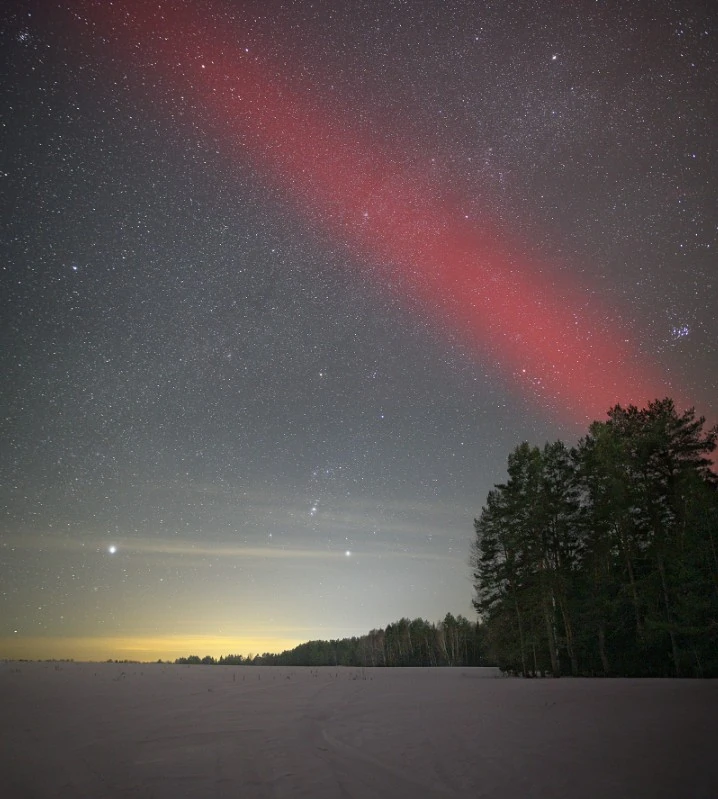A coronal mass ejection (CME) that hit Earth on March 3, 2024, sparked G2 – Moderate geomagnetic storming with widespread Stable Auroral Red (SAR) arcs over the Baltics and Russia.
SAR arcs were widely observed, from Latvia to eastern Russia during the last G2 geomagnetic storm, as reported by Dr. Tony Phillips of SpaceWeather.com.
“Glowing with some of the purest red light nature can produce, these arcs look like auroras but are produced by a completely different process,” Phillips said.
While auroras appear when charged particles rain down from space, hitting the atmosphere and causing it to glow, SARs are a sign of heat energy leaking into the upper atmosphere from Earth’s ring current system, a donut-shaped circuit carrying millions of amps around our planet.
“During the geomagnetic storm of March 3, this ring current sprang a significant leak,” Phillips explained.

“It emerged from the trees and passed right by the Pleiades… the red color was so pure,” said Vladimir Nerush, who photographed the SAR arc (above) just east of Moscow.
SAR arcs are among the reddest things in the sky, with a monochromatic glow at 6300 Å that comes from atomic oxygen in the upper atmosphere. While the human eye is relatively insensitive to light at this wavelength cameras catch them easily. Phillips also shared a pro tip for those who want to capture them in all their beauty: use a 6300 Å filter.
References:
1 These red lights are not auroras – SpaceWeather – March 8, 2024
Featured image: SAR arc over Kiia küla, Estonia. Credit: Märt Varatu via SpaceWeather
Filament eruption produces large CME, slight graze possible
Thursday, March 7, 2024
CME impact sparks G2 – Moderate geomagnetic storm
Monday, March 4, 2024
Major X6.3 solar flare erupts from Region 3590
Thursday, February 22, 2024
Two X-class solar flares – X1.8 and X1.7 erupt from Region 3590
Thursday, February 22, 2024
Major X2.5 solar flare erupts from AR 3576, producing large CME
Friday, February 16, 2024
Three CMEs heading toward Earth, impact expected on February 13
Monday, February 12, 2024
Proton flux rising after powerful farside eruption, S1 – Minor solar radiation storm
Monday, February 12, 2024